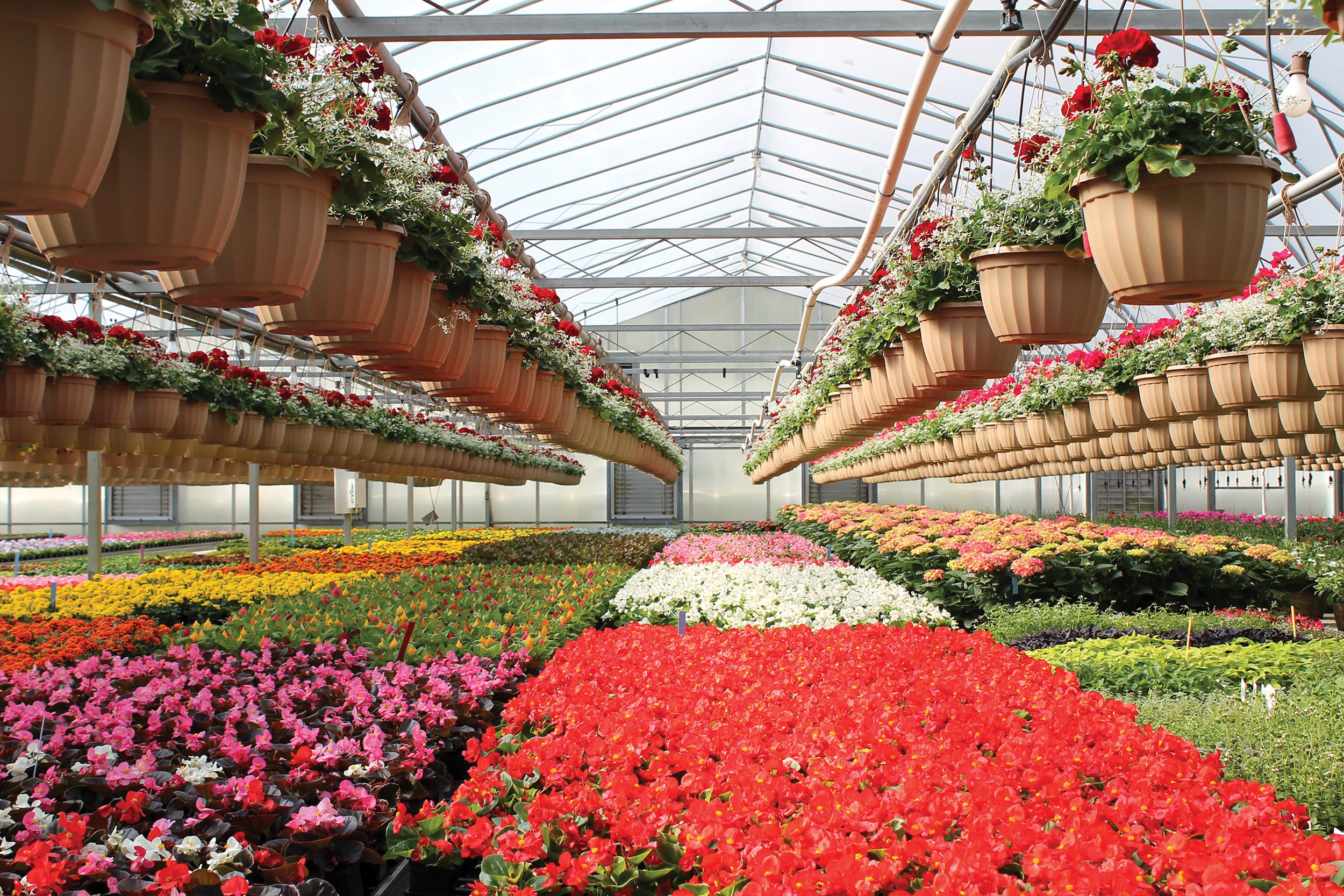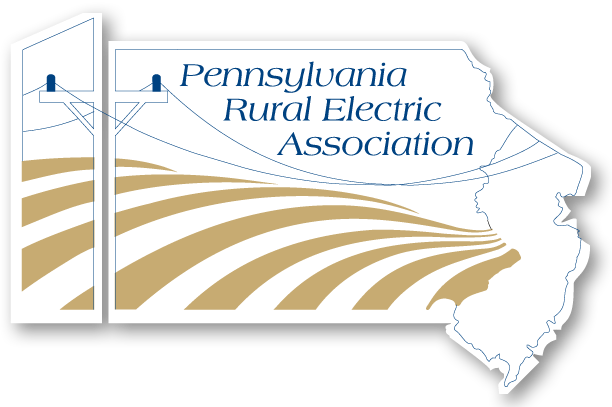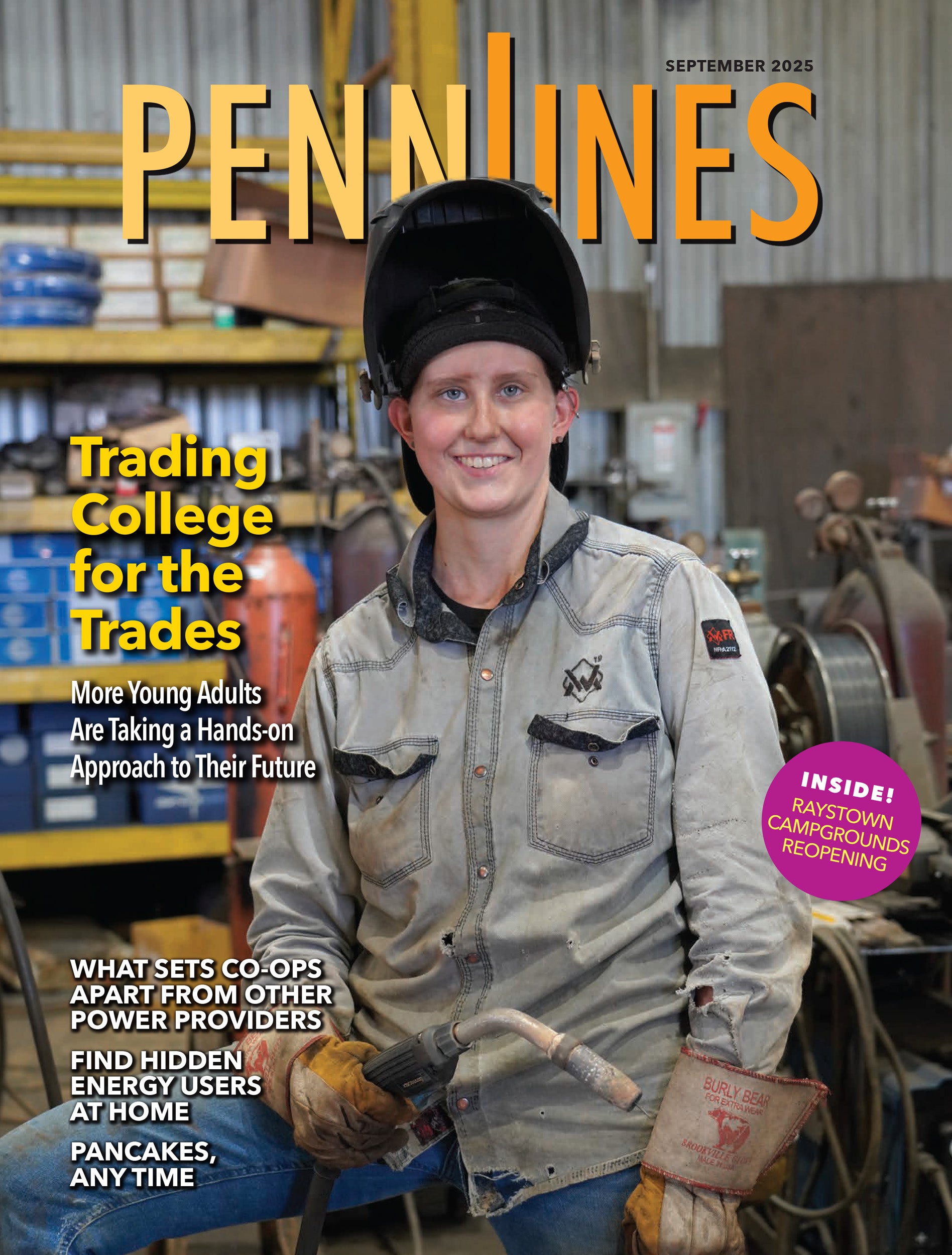The Bloom Boom
Rural Pennsylvania is a National Leader in Growing Plants
George Weigel
Penn Lines Contributor
Pennsylvania’s many rural plant growers do more than give us the flowers that beautify our yards and the vegetable plants that fill our gardens.
They churn out more than $1 billion worth of flowers, vegetable plants, trees, shrubs and other plants per year, according to the U.S. Department of Agriculture’s Census of Agriculture.
Pennsylvania is also No. 2 in the nation in the number of greenhouse flower growers with 702, the department reports. Only California has more. On top of that, a recent report from the Center for Rural Pennsylvania (Center) says the state has 2,450 horticulture businesses — most in rural areas and nearly three-quarters run by families or individuals.
These rural growers largely hire locally, buy supplies locally, and often sell locally, fueling rural economies, says Michaela Miller, a data analyst for the Center.
“Horticulture is a major driver of Pennsylvania’s agricultural economy, though its impact is often underestimated because many operations are small, family-run businesses,” notes Miranda Harple, interim director of Pennsylvania’s new Center for Plant Excellence, a collaborative aimed at fostering research, innovation and growth in the state’s agriculture industry.
“These businesses,” she adds, “are anything but minor in their contributions.”
Who are these growers?
According to the 2022 U.S. Census of Agriculture, almost half of the state’s plant producers (49%) are primarily farmers, suggesting that plant sales are a sideline for many.
Growers are clustered in the southeastern part of the state with Lancaster County leading the pack with 236 operations.
A typical grower in the region is Musselman Greenhouses (now officially Musselman Wholesale Foliage Inc.), a third-generation, family-owned operation in the Adams County countryside near Cashtown. Glenn Musselman founded the business in 1948 with two greenhouses to supply his retail flower shop.
“My grandfather developed an interest in flowers and flower arranging, so he started a flower shop on what was a fruit farm,” says Aimee Rohrbach, Glenn’s granddaughter and a member of Adams Electric Cooperative, who now owns the business with her brother, Andy Musselman. “It was a typical country business — basically on a farmette.”
Glenn’s son, Dave, expanded into houseplants in the 1970s and began growing wholesale — ranging from annual flowers and vegetables to perennials, herbs, potted blooming plants, and a range of seasonal plants, such as poinsettias, Easter lilies, and mums.
Although the business only grows on an acre and a half under glass and another two in the field, Musselman is one of the region’s top poinsettia and foliage-plant suppliers.
“Foliage plants are sort of our niche,” says Rohrbach, adding the business is now primarily wholesale (92% of sales) with about 20 full- and part-time employees.
Customers include independent garden centers, landscapers, retail greenhouses, hardware stores and farmer’s markets in 10 states (although most are in Pennsylvania).
Another typical example is Musser Forests, a family-owned, woody-plant operation that Fred Musser started as a Christmas tree farm in 1928 in Indiana County.

RURAL ROOTS: Seasonal flowers are ready for sale at Musselman Wholesale Foliage Inc. in Adams County. Family-owned horticulture businesses like this are helping to fuel rural economies.
The business, a member of REA Energy Cooperative, specializes in growing conifers and hardwoods from seed on more than 1,000 outdoor acres as well as rooted needled and broadleaf evergreens under an acre and a half of glass. Musser Forests produces a staggering 35 million seedlings a year, mostly sold bareroot nationwide online and through a catalog.
Operations Manager Tom Gill says the business employs 35 year-round (with another couple of dozen during peak times) and also operates a garden center about 5 miles outside of Indiana.
Growers small and large
Several regions of Pennsylvania sport clusters of small greenhouses that sell flowers and vegetable plants directly to gardeners — many of them operated as farm sidelines by Amish and Mennonite growers.
Lancaster County’s eastern section is one example, Mercer County has another pocket, and Somerset County, served by Somerset Rural Electric Cooperative, sports another cluster.
“While many of these growers are small,” Harple says, “that’s not the whole story.”
She points out Pennsylvania is also home to four of the Top 100 largest greenhouse growers in the country, according to Greenhouse Grower magazine’s annual count.
Quality Greenhouses is Pennsylvania’s largest operator, growing on 28 acres of greenhouse space in three locations in the Dillsburg and York Springs areas of rural northern York County. That ranks the family-owned, wholesale-only business at No. 45 on the 2024 Greenhouse Grower list.
The three others on the Top 100 list are: No. 59 Hoekelen Greenhouses in Schuylkill County; No. 81 Esbenshade’s Greenhouses in Lancaster County; and No. 95 New Leaf Growers in Bucks County.
“That represents over 2 million square feet of environmentally controlled greenhouse space,” Harple says. “So you have this powerful mix of small, community-based growers and nationally recognized large-scale operations playing important roles in our rural communities.”
Why is Pennsylvania such a plant-growing hotbed?
Gregg Robertson, government relations advocate for the Pennsylvania Landscape and Nursery Association, says Pennsylvania’s large number of growers relates to the state’s agriculture heritage in general. The state’s nursery industry sprung up alongside its farms as far back as colonial times.
“Nurseries begat other nurseries as nurserymen [and women] learned the trade at the knee of other successful nursery entrepreneurs and went off to start their own operations,” Robertson says. “While there was competition, nursery entrepreneurs often shared their secrets of success freely with each other.”
Geography is another factor: “Pennsylvania is near major metro markets like Philadelphia, New York City and Washington, D.C.,” Harple says. “That proximity means faster, more cost-effective distribution, which is essential for products grown in greenhouses.”
The recent slide
Despite its many growing operations, Pennsylvania’s total is significantly less than 20 years ago.
says the 2008 recession took a toll on the state’s growing operations, cutting nursery sales by 17% between 2009 and 2019 and reducing the number of nurseries by 25%. Acres devoted to nursery growing also decreased by 46% between 2007 and 2017.
The numbers haven’t rebounded, largely because land is expensive to buy, start-up costs are high, and in the nursery business, it takes three to five years to produce the first saleable crop, Robertson adds. Age is playing a role, too.
“Many existing growers are nearing retirement,” Harple adds, “and without a next generation ready to take over, their most viable option is often to sell their land. Developers can offer a much more lucrative path over continuing the business. The decline is something we’re actively working to address.”
Harple says these small plant-growing businesses are worth keeping not only for their economic impact but also because of their cultural significance.
“These businesses shape the identity of our rural communities and the character of our landscape,” she says. “Whether it’s a local greenhouse supplying perennials to their community or a multi-acre nursery growing trees for restoration projects, these growers are part of what makes our state a beautiful place to live.”
Also in this issue
Trading College for the Trades
More Young Adults are Taking a Hands-on Approach to Their Future


